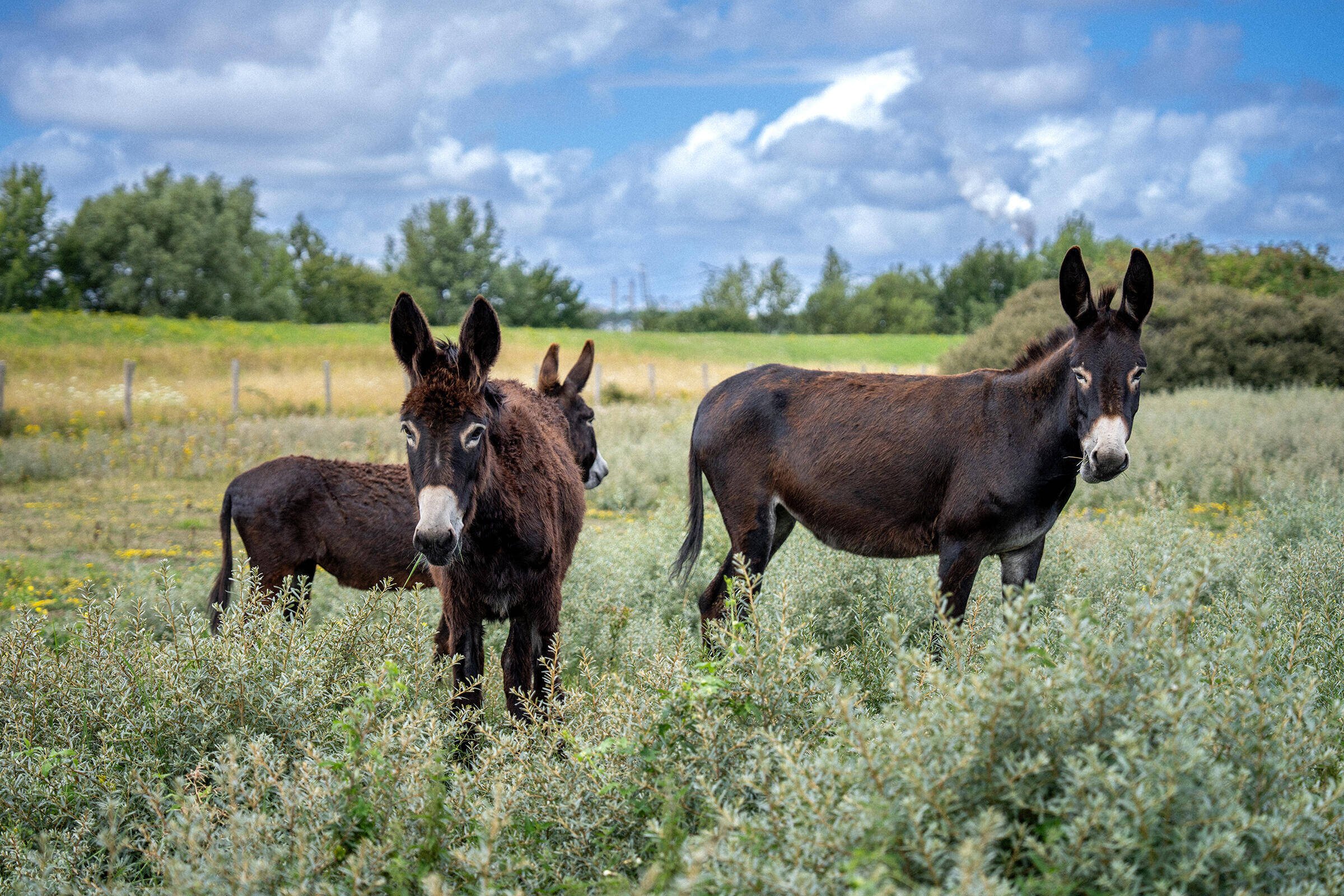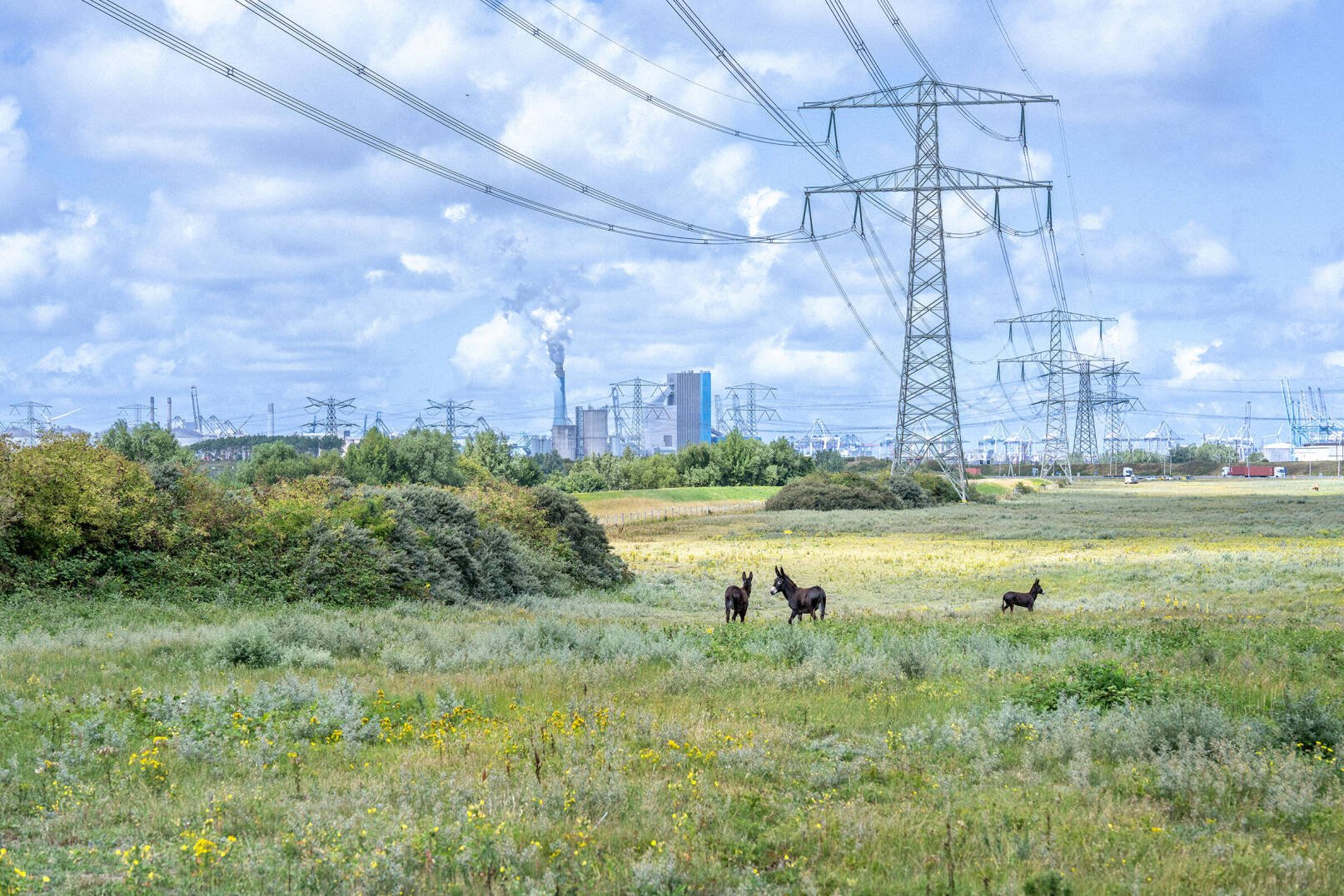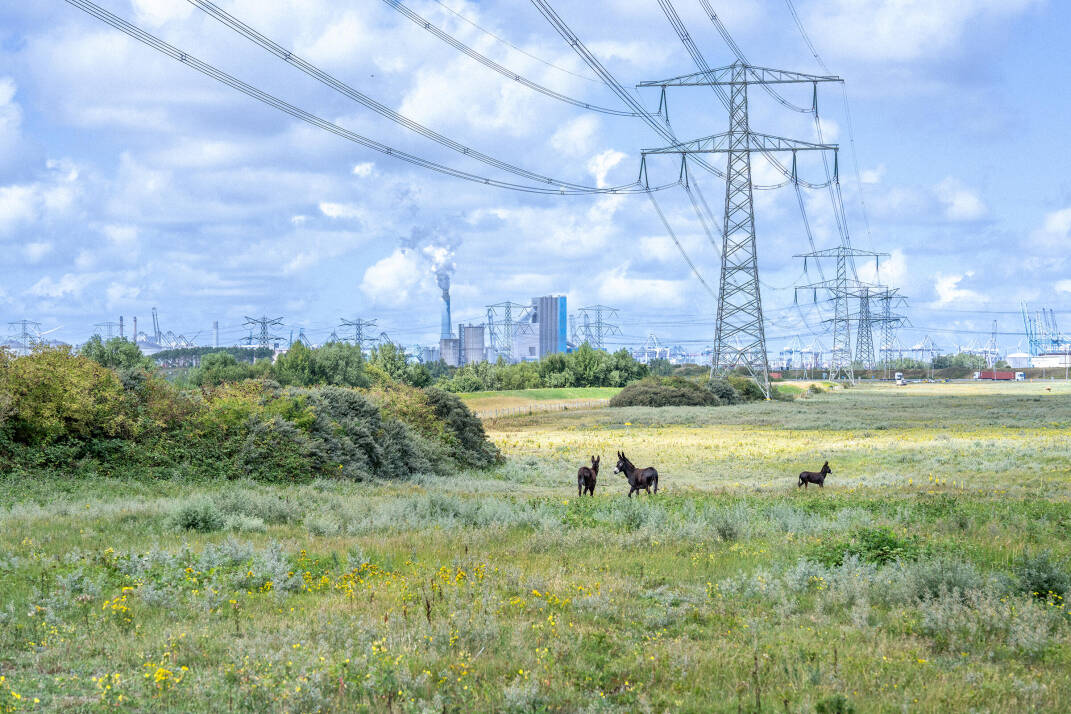Scroll down
HEADLINES
Special residents

In developing the port, the Port of Rotterdam Authority carefully considers protected plant and animal species, ecological values and biodiversity. This approach requires professional management and well-considered decision-making. In this respect, the three Spanish donkeys are part of a much broader approach. And one that attracts conspicuous attention.
The Rotterdam port is surprisingly rich in nature, from oysters to special orchids and from seals to pipistrelle bats, wildlife is far from uncommon. These special port residents can not only be found in green areas such as the pipeline corridor, but also in unexpected places amid the industry.
Tauros cattle
The animals took up residence in the Geuzenbos in late July, after meticulous preparation, including health checks, vaccinations and a period of acclimatisation to the Dutch weather. They are initially expected to stay for one to one and a half years, allowing the donkey’s behaviour and effectiveness to be monitored across different seasons. If the donkeys eat enough buckthorn, they will stay in the port.
The 29-hectare forest was already home to two Tauros cattle. However, they show little appetite for the buckthorn. The Asset Management Infrastructure Department of the Port of Rotterdam Authority, in consultation with Grazelands Rewilding, the organisation responsible for the grazing project, proposed introducing donkeys to the area. In Spain, the donkey’s behaviour towards Tauros cattle has already been observed. The two species seem to tolerate each other well and have even been spotted lying near each other.
Pipeline corridors

For safety reasons, vegetation along a pipeline corridor must always be kept short. When that only concerns grassy vegetation, the task is straightforward. It is a different matter in the western part of the port, near the dunes, where buckthorn is rampant. This tenacious shrub thrives in the area, spreading rapidly and growing to considerable heights in a short time. The result is intensive maintenance, requiring many hours of work and incurring high costs. The Port of Rotterdam Authority therefore prefers to deploy grazers here rather than having the vegetation regularly mowed by machine.
Pipeline corridors are an important part of the port area. They contain more than 1,500 km of pipelines linking different companies and are essential for transporting various substances, such as petroleum products, chemicals and industrial gases. The pipelines not only connect companies in the port, but also run to other locations in the Netherlands, Belgium and Germany.
This breed of donkeys is known to feed on dry, rugged vegetation. In Spain, they are deployed in areas with many thorny plants to combat forest fires, among other things. Roughly the size of an average pony, these donkeys are also highly resilient to harsh weather conditions. The Port of Rotterdam Authority has brought three of these donkeys to the port area so they can eat the buckthorn growing on part of the pipeline corridor in the Geuzenbos (forest).
Whether it is due to the low news offerings during the holiday period or people's need to read upbeat news in turbulent times, we can only guess. But three Spanish donkeys were not out of the news in August and September. Local media, as well as national and international newspapers and broadcasters, carried the news that three donkeys of the Zamorano-Leonés breed have been brought to the port to keep the vegetation short on part of the pipeline corridor.
Donkeys dominate news about Rotterdam port
Pipeline corridors are an important part of the port area. They contain more than 1,500 km of pipelines linking different companies and are essential for transporting various substances, such as petroleum products, chemicals and industrial gases. The pipelines not only connect companies in the port, but also run to other locations in the Netherlands, Belgium and Germany.
Donkeys dominate news about Rotterdam port

In developing the port, the Port of Rotterdam Authority carefully considers protected plant and animal species, ecological values and biodiversity. This approach requires professional management and well-considered decision-making. In this respect, the three Spanish donkeys are part of a much broader approach. And one that attracts conspicuous attention.
The Rotterdam port is surprisingly rich in nature, from oysters to special orchids and from seals to pipistrelle bats, wildlife is far from uncommon. These special port residents can not only be found in green areas such as the pipeline corridor, but also in unexpected places amid the industry.
Special residents
The animals took up residence in the Geuzenbos in late July, after meticulous preparation, including health checks, vaccinations and a period of acclimatisation to the Dutch weather. They are initially expected to stay for one to one and a half years, allowing the donkey’s behaviour and effectiveness to be monitored across different seasons. If the donkeys eat enough buckthorn, they will stay in the port.
The 29-hectare forest was already home to two Tauros cattle. However, they show little appetite for the buckthorn. The Asset Management Infrastructure Department of the Port of Rotterdam Authority, in consultation with Grazelands Rewilding, the organisation responsible for the grazing project, proposed introducing donkeys to the area. In Spain, the donkey’s behaviour towards Tauros cattle has already been observed. The two species seem to tolerate each other well and have even been spotted lying near each other.

Tauros cattle
For safety reasons, vegetation along a pipeline corridor must always be kept short. When that only concerns grassy vegetation, the task is straightforward. It is a different matter in the western part of the port, near the dunes, where buckthorn is rampant. This tenacious shrub thrives in the area, spreading rapidly and growing to considerable heights in a short time. The result is intensive maintenance, requiring many hours of work and incurring high costs. The Port of Rotterdam Authority therefore prefers to deploy grazers here rather than having the vegetation regularly mowed by machine.
Pipeline corridors
This breed of donkeys is known to feed on dry, rugged vegetation. In Spain, they are deployed in areas with many thorny plants to combat forest fires, among other things. Roughly the size of an average pony, these donkeys are also highly resilient to harsh weather conditions. The Port of Rotterdam Authority has brought three of these donkeys to the port area so they can eat the buckthorn growing on part of the pipeline corridor in the Geuzenbos (forest).
Whether it is due to the low news offerings during the holiday period or people's need to read upbeat news in turbulent times, we can only guess. But three Spanish donkeys were not out of the news in August and September. Local media, as well as national and international newspapers and broadcasters, carried the news that three donkeys of the Zamorano-Leonés breed have been brought to the port to keep the vegetation short on part of the pipeline corridor.
HEADLINES